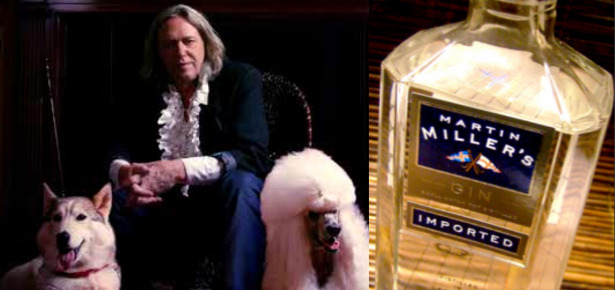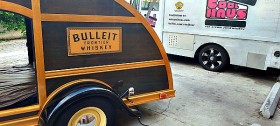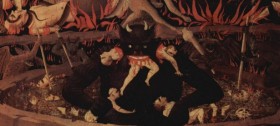Martin Miller Interview

Martin Miller is a millionaire who knows what he likes. With a gregarious personality and a strong entrepreneurial spirit, Miller set out to make a name for himself. As a business-savvy schoolboy, Miller got into hamster breeding and started a magazine for local teenagers. By the age of 14, Miller put out a mail-order dating book called Success with the Fairer Sex. Miller’s next big venture was a The Lyle Antiques Guide, a mail-order guide for antique buyers that had annual sales of $100,000 within four years. That spawned The Miller’s Antiques Price Guides which led to a series of other publications. After accumulating cash in the publishing game, Miller started investing in property. He opened a series of boutique hotels including the popular Miller’s Residence in Notting Hill.
In 1999, Miller sat down with to friends and mapped out this idea to create a super-premium, extra luxurious gin. After much tinkering and an unbelievably complex distillation and chilling process, Martin Miller’s Gin was born. We asked Miller about his gin, his drinking habits and his various entrepreneurial pursuits. Here’s what he had to say.
CS: From publishing to antiques, boutique hotels and distilling, you’ve been involved in quite a few ventures. Is there a common thread that runs through your various entrepreneurial pursuits?
MM: Well, the first thing I learned to draw at art school was a palm tree, since then I have pretty much planned my businesses around spending as much time as I can laying under one!
Most of my enterprises have started from hobbies or pastimes that, were I not involved in them professionally, I still would do for the pure pleasure of it.
MM: Whether that has been collecting antiques or publishing, owning and running hotels or for that matter gin distilling, I guess the one common thread has been to always do it for the love of it. That way the passion for whatever it is you are doing will shine through. I believe a little naivety mixed with a lack of cynicism can be very useful. The worst thing you can do is jump on a bandwagon thinking you’ll make a million. As they say,”once you spot a bandwagon it’s already passed!”
CS: How often do you sip on the gin that bears your name?
MM: Without sounding like a complete drunk, I tend to drink Martin Miller’s every day. It’s available in all my hotels so for me a great G and T is the perfect way to end the day… or start the morning. Now when I am traveling I’m pleased to see it’s increasingly available in some of the great hotels I visit such as the Starwood group and the Aman resorts.
CS: How did you go about choosing the different botanicals that flavor Martin Miller’s Gin?
MM: You have to remember that when I first started, gin brands were dying off at a fast rate and I was considered mad to even consider launching a gin. Now, of course there must be five or six new gins coming out every month, and most of them claim distinction through a range of exotic and foreign botanicals and flavorings. For me that sort of misses the point. I’m a bit of a stickler for tradition when it comes to gin. In my opinion the ten botanicals normally associated within the classic gin profile are already more than enough. The real craft is in the distilling and blending process. Gin should never be too assertive, a great gin should work equally well in a complex cocktail as it does in a Gin and Tonic. Perhaps that’s why it’s such an English spirit, polite, understated yet distinctive. Remember, gin can be seen, in essence, as a flavored vodka; a very particular flavored vodka for sure, but then some of these fancy ingredients smack of attention seeking and a lack of creativity. Really, unless great care is taken, they take gin on to a whole other level where it becomes just another flavored vodka and no longer gin, that’s a danger.
CS: How much “extensive tasting” went into the initial formulation Martin Miller’s Gin?
MM: Well the whole process started turning over in my mind back in 1997. I had just had what I would call a typical ‘Pub Gin and Tonic’. Two small ice cubes in a beer glass, a small shot of low proof gin, topped up with gun tonic and garnished with a preserved lemon slice. Typically disgusting! It was almost a panic decision – I thought, ‘is this the way that gin is going? Am I becoming a vodka drinker?’ That’s when I decided I would make my own gin. From there on the process went quite quickly, we managed to get about 80% of the way there within about six months. Then the trouble started. It took nearly another year to get that last 20% of the way. I guess that counts as “extensive tasting!’
CS: What distinguished formulation #7 from the rest of the bunch?
MM: In the final batches, which we tasted at a large party in Miller’s Residence, we had a favorite, sample 7. Nonetheless we wanted to double check. We had been working on it for so long that we were beginning to doubt our sanity let alone our taste buds! So we invited an audience of sommeliers, and barmen/mixologists and, making them work for their supper, made them taste all the samples and mark them. Luckily, number seven was the clear winner by a mile. It was the sample that had all the ingredients in place. Dual distillation, Icelandic water and the addition in Iceland of a tiny amount cucumber distillate used, not as a flavoring, but as a ‘drying agent’ to the finish. I remember at the time people thought it crazy and pure weird to use cucumber. I hear it is quite popular in gin these days…
CS: Martin Miller’s Gin is batched distilled like malt whiskey. What is it about this distillation process that gives your gin a distinctive flavor that’s different from other bottled gins?
MM: Well, one of the characteristics of Martin Miller’s is what we call ‘it’s clarity of taste’. What we mean by this is the ability for all of the various scents and flavors of the gin to make themselves apparent in an orderly and enjoyable way. To achieve this we separate and distill the botanicals in two individual batches. In simple terms the earthier botanicals are distilled apart from the citrus elements. It is rather similar to cooking, a one pot dish tastes different to an assembled plate of food. It gives my gin a brilliance and freshness to the citrus elements that I had found lacking in other gins.
CS: What’s up with the touch of Iceland? Does all that Icelandic effort really make a difference?
MM: Well, that really was a bit of madness. There may have been method in the madness, but madness it was. I had visited Iceland a couple years earlier, around 1996 I think.
I was a guest of their first women President Vigdís Finnbogadóttir and I was greatly impressed by the unspoiled and unpolluted nature there. It was there I first tried the water, and experienced the Icelander’s reverence for it. My friends who were helping me on my gin’s development had been there too and had already spotted the amazing effect it had when blended with spirit. It’s almost certainly the purist and softest water on earth, so soft it’s almost ‘bouncy’ in the mouth. The geeks tell me its naturally super oxygenated and has a higher surface tension and that holds in the volatile spirits that can give other gins that “pine needles” scent and burn. What I do know is that whenever we have tried blends with industry standard de-mineralized water it is totally, totally different. So there you are, not the best of business decisions, but the best decision for the brand.”
CS: Were you always a gin drinker? What other spirits/cocktails do you enjoy?
MM: My parent’s always claim I was conceived on gin! So for me it has always been mother’s milk. I am a great fan of a good gin and tonic, and was very glad when our good friends at Fevertree came along and developed a great tonic to match my gin. Other than a G and T, I am a fan of all the old school classic cocktails and have a particular fondness for ‘converting’ vodka drinkers to the wonders and mysteries of gin. I like to make drinks like Bloody Marys and Mojitos, where I substitute either vodka or white rum with my gin. The usual response is “Wow!, this is the best Bloody Mary or Mojito I have ever had, how did you make it?’” So I tell them. I particularly love it when they wail, “But I hate gin!”
Related Posts
No related posts.
| Print article | This entry was posted by Chris Stout on August 17, 2010 at 12:03 pm, and is filed under Lifestyle. Follow any responses to this post through RSS 2.0. Both comments and pings are currently closed. |
Comments are closed.



















